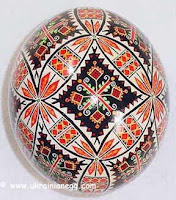 Last night, me and my trusty copy of Wassily Kandinsky's Concering the Spiritual in Art sat down for margaritas and nachos at one of THE best cheap mexican places in New York, Noche Mexicana. While waiting for the best damn spicy chicken nachos I've ever had, I came across this jab at the art world from Mr. K:
Last night, me and my trusty copy of Wassily Kandinsky's Concering the Spiritual in Art sat down for margaritas and nachos at one of THE best cheap mexican places in New York, Noche Mexicana. While waiting for the best damn spicy chicken nachos I've ever had, I came across this jab at the art world from Mr. K:"The artist seeks for material reward for his dexterity, his power of vision and experience. His purpose becomes the satisfactcion of vanity and greed. In place of the steady co-operation of artists is a scramble for good things. There are complaints of excessive competition, of over-production. Hatred, partisianship, cliques, jealousy, intrigues are the natural consequences of this aimless, materialist art."
You go, Wassily, you go. I picked up Kandinsky's book in the first place in hopes of it triggering some sort of higher thoughts about art, to remind myself there what it is I love behind all the dirty (Jeff) Koon-sian insider trading. Unfortunately, all it did was make me blog even more about the financial side art , this time saying, "Nah-Nah-Nah-Nah, I've got Wassily Kandinsky on my side!"
So, just for fun, let's discuss the career of Mr. Koons. Once a savvy Wall-Streeter, Jeff Koons realized that if he really wanted to make a killing should enter the least regulated, most speculative market of them all: art. He knew all the right people, had all the right connections, and before you knew it, Koons and Co. hatched a plan to make a killing. Jeff would make some "art," his rich friends would buy it, bid up the prices, make sure it ended up in all the right collections, and eventually the stuff would be worth millions and make them all filthy-stinkin-richer. It's actually a really good plan, one that I don't really have a problem with until we get to the part of the story where MUSEUMS display his art. Yes, the same institutions engraved with sayings like "Art still has truth, take comfort there," perpetuate and buy into all this because they need the money. All those rich Wall-Streeters buying up Koon's art also happen to be the people who keep the lights on at every major museum in the world, and thus museum leadership has to keep them all happy if they like keeping their jobs (and million+ dollar salary and benefit packages). Keeping your patrons happy includes displaying work by artists represented in their personal art collections, as major museum shows increase the value of an artist's work. So if a potential donor owns a Jeff Koons, and a museum director wants to butter him/her up, all the director has to do is display a Koons sculpture/painting/masterbatory artifact. The donor's collection increases in value, he/she donates money to the museum and everybody wins. Everybody, that is, except the taxpayers, museum visitors, students of the arts, and young artists making work that actually has heart.


































